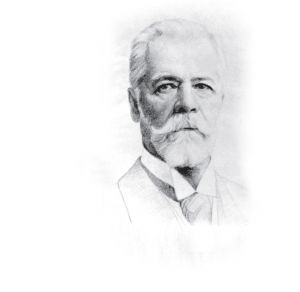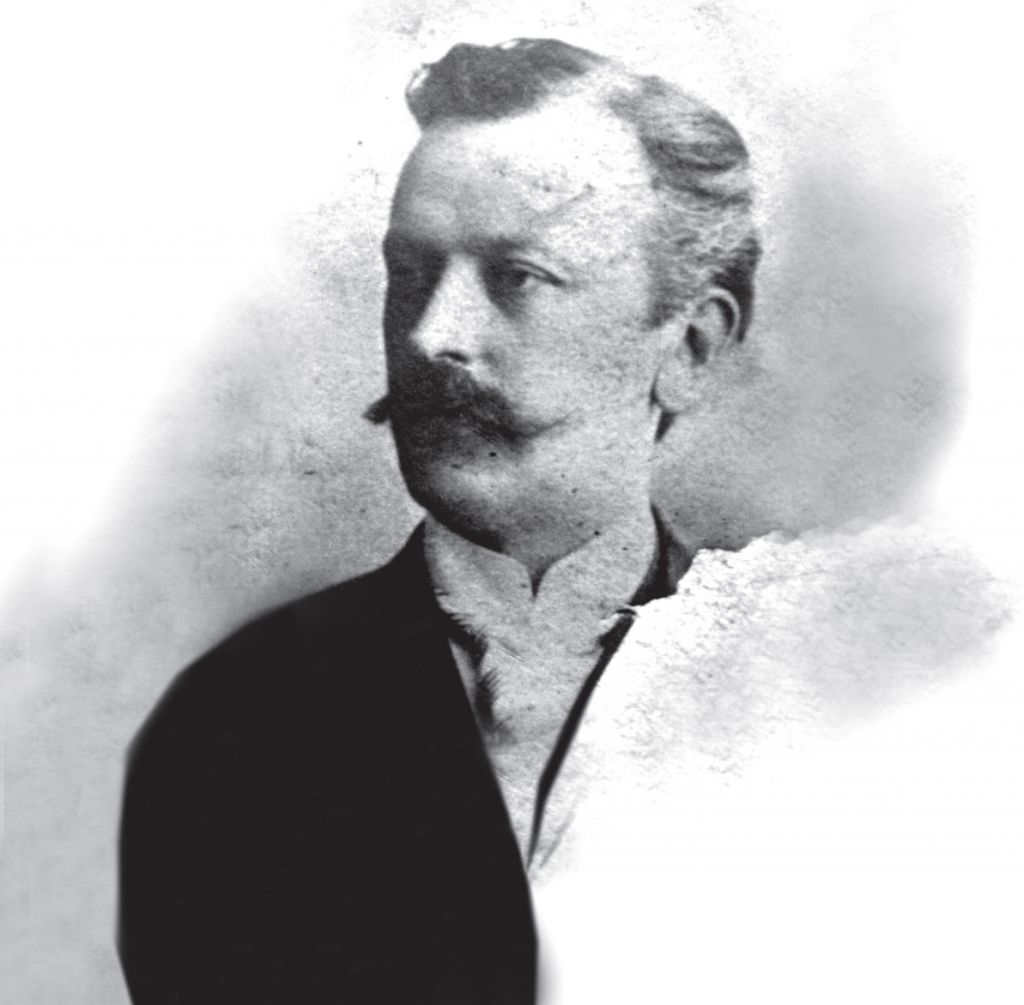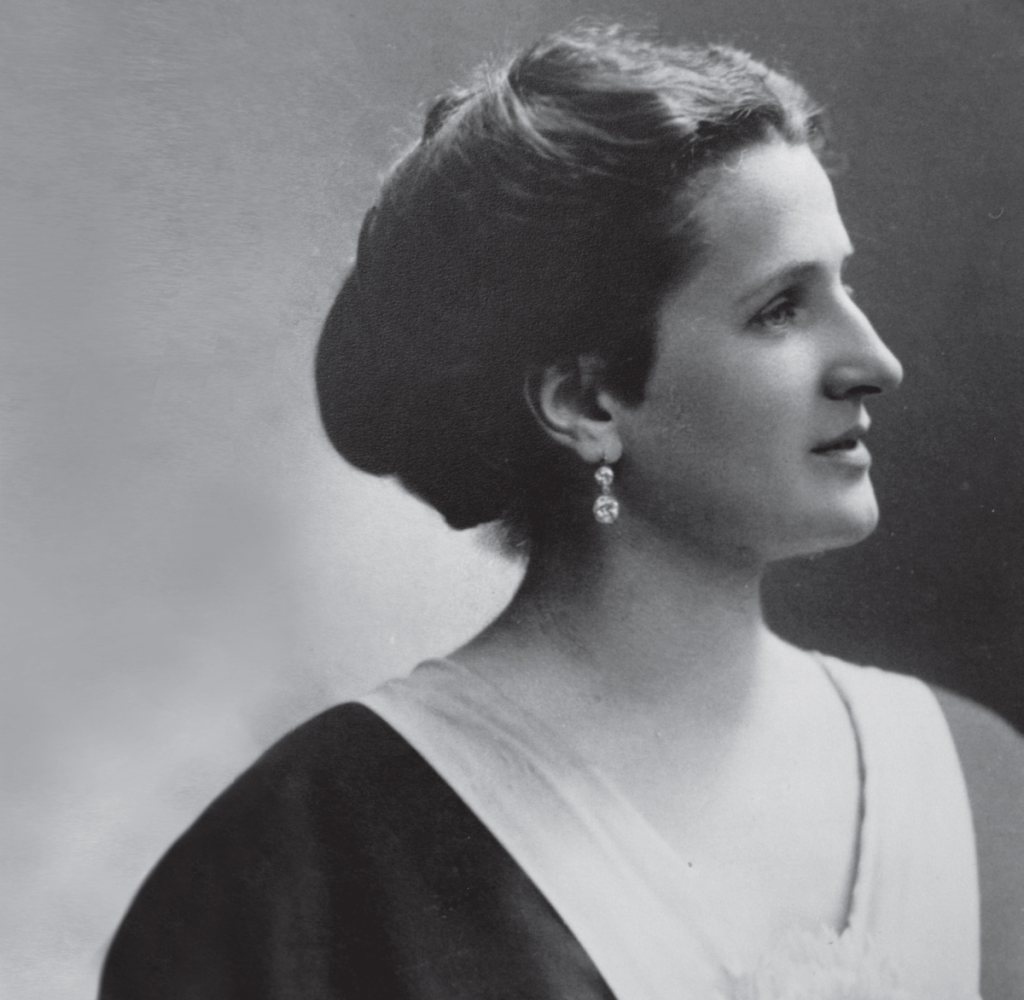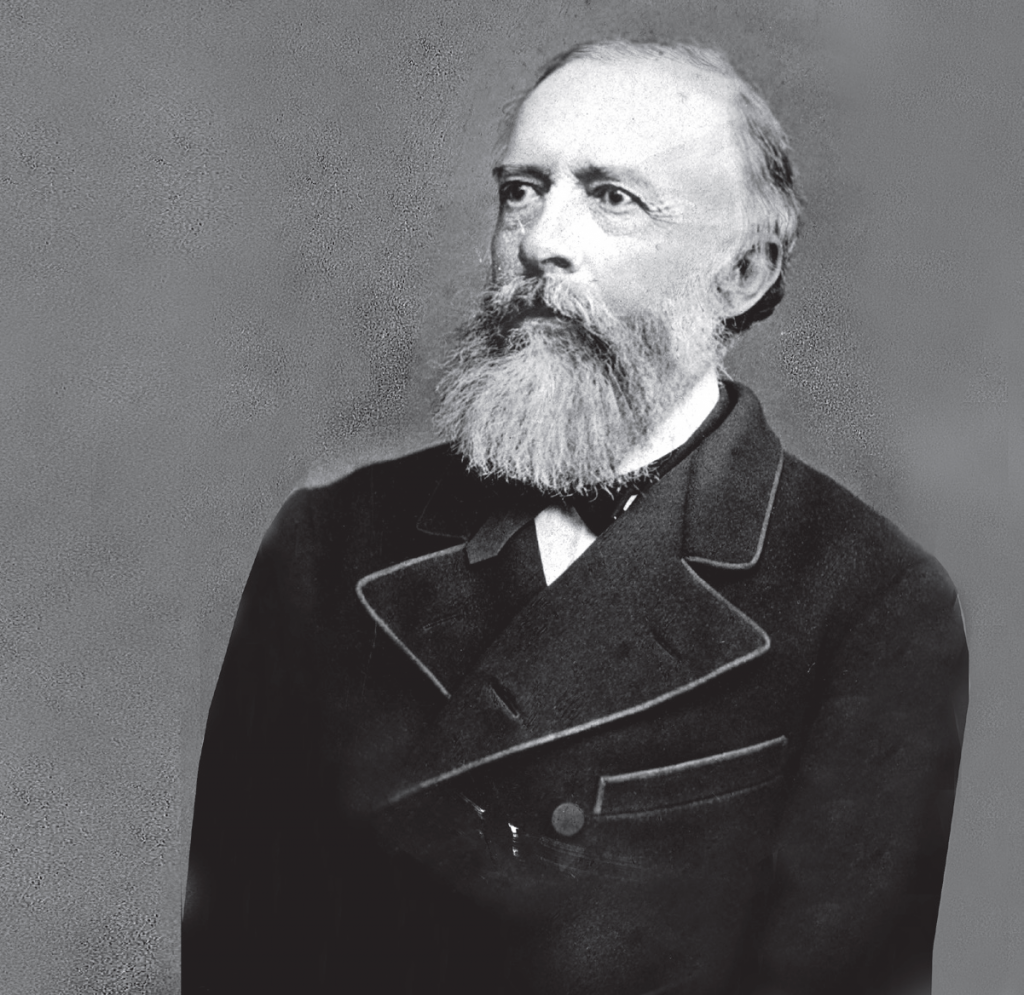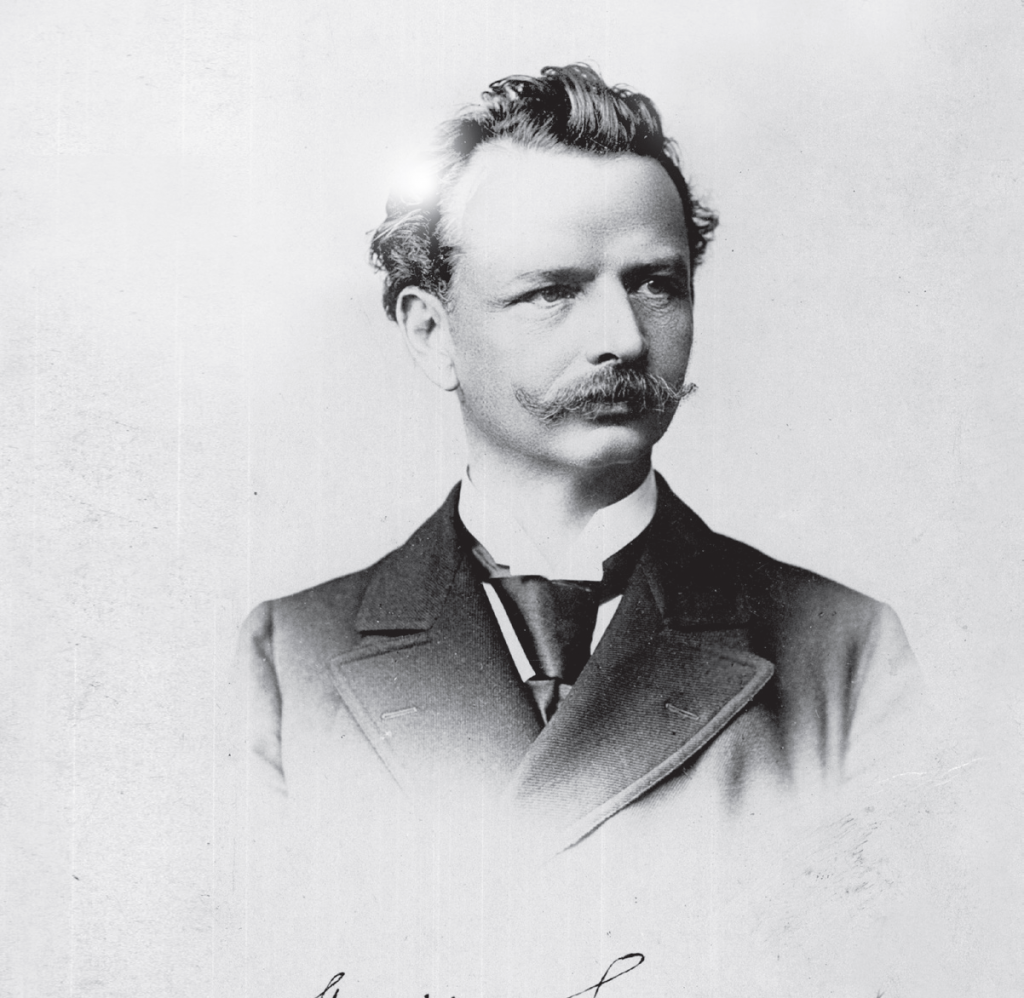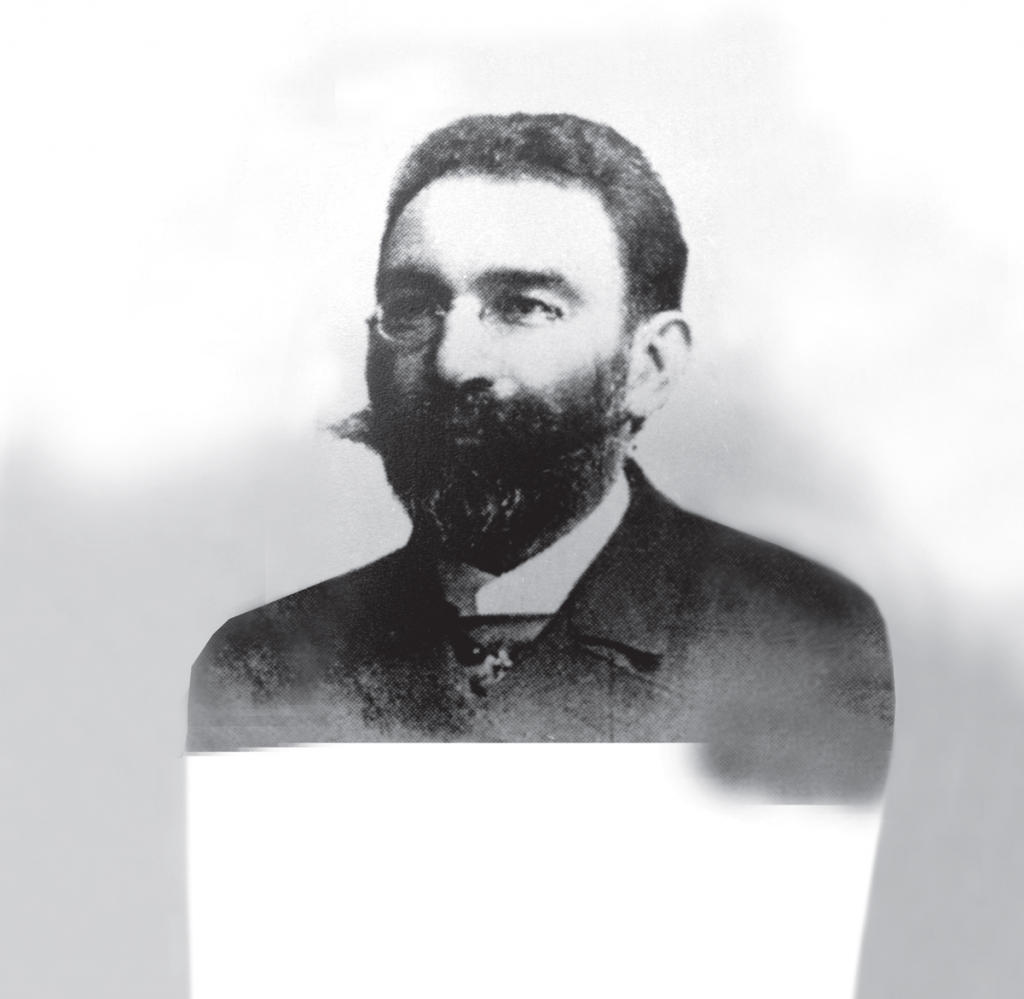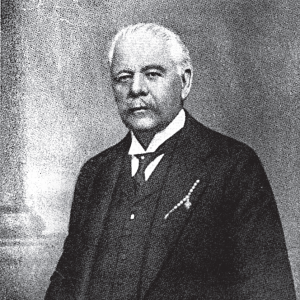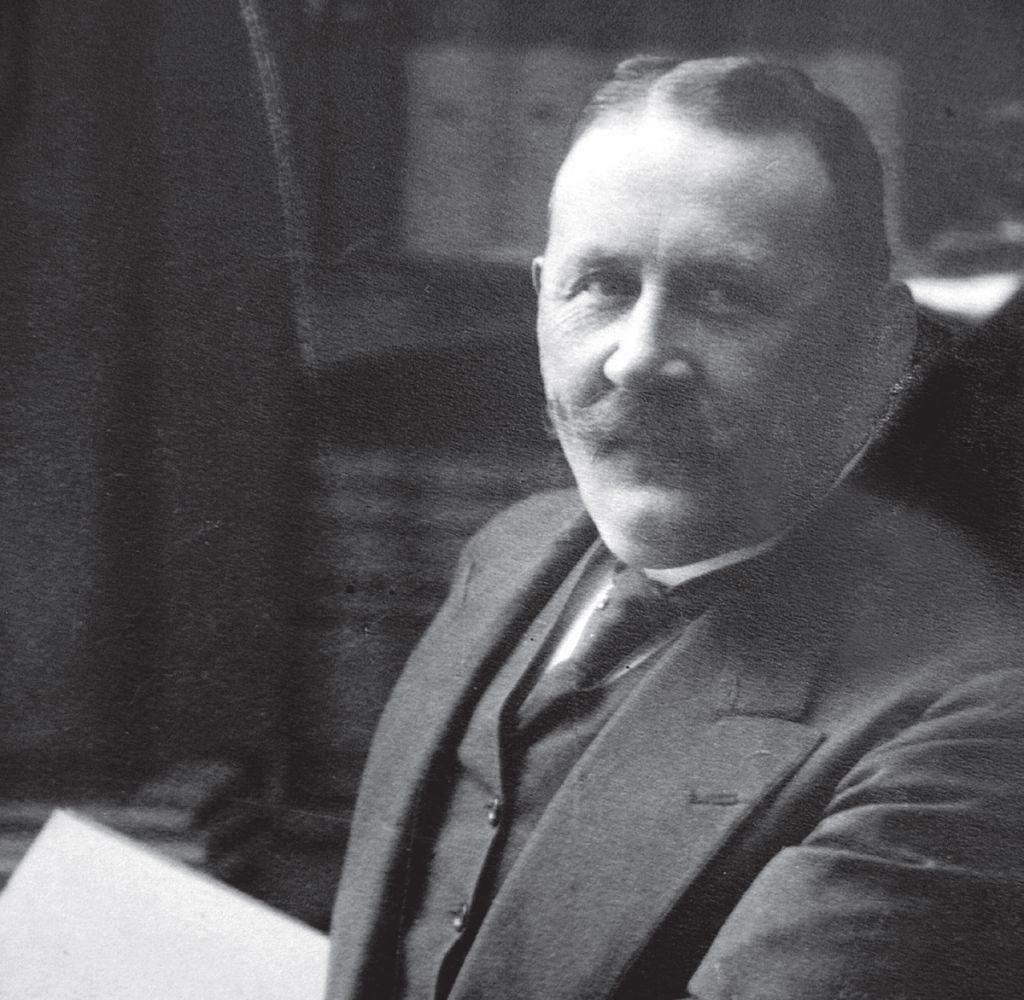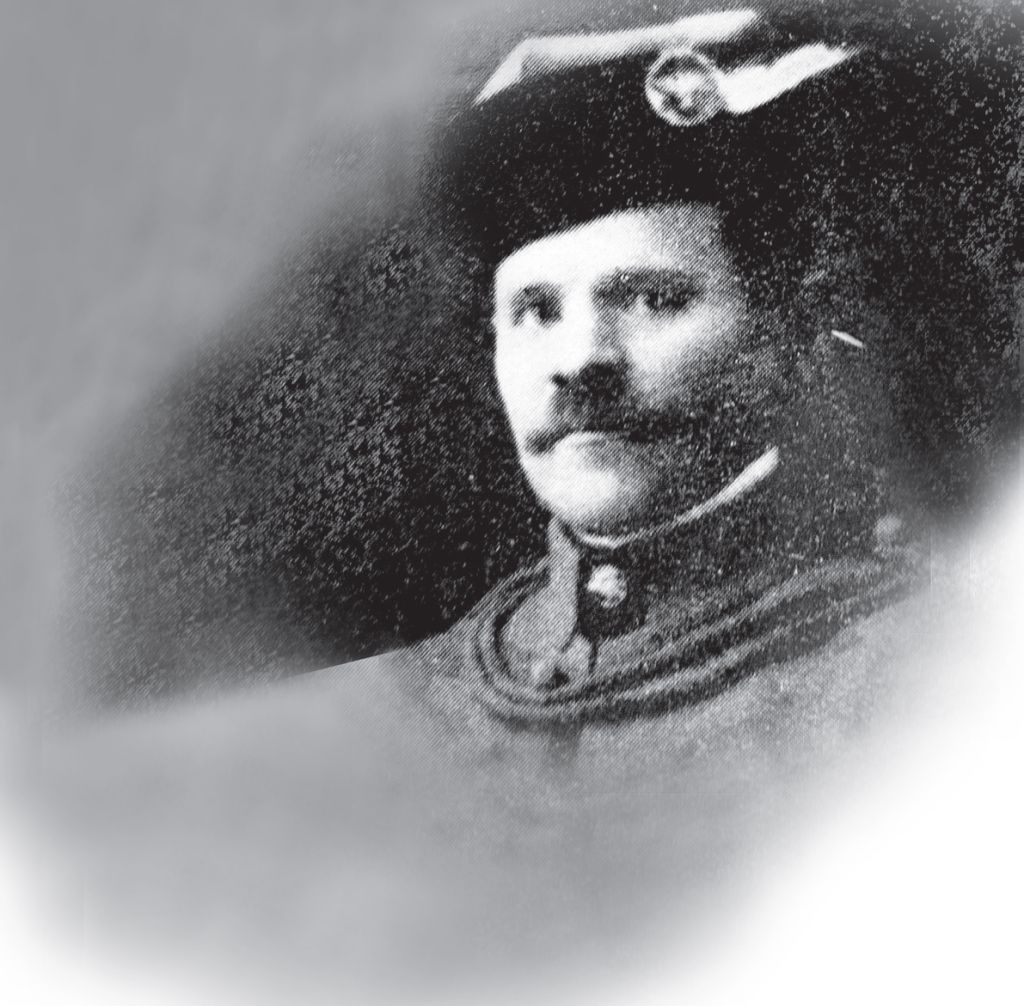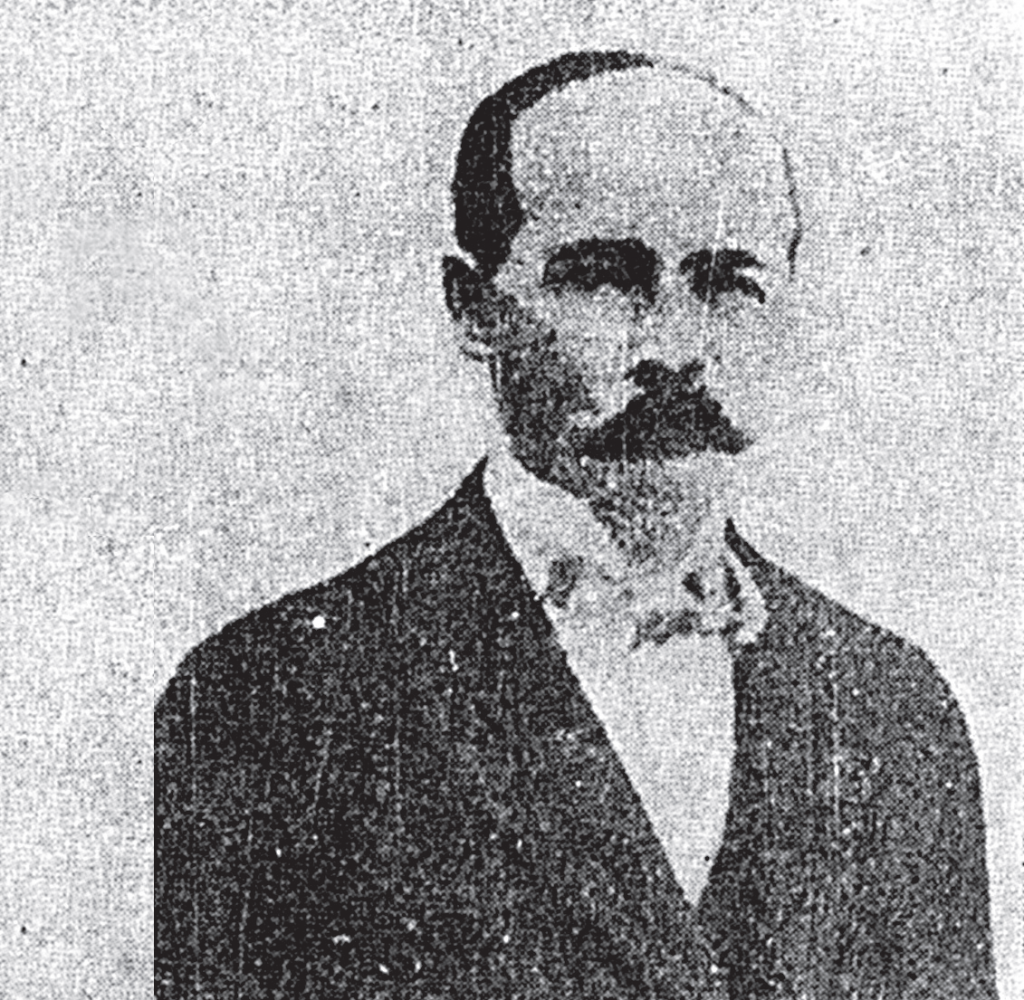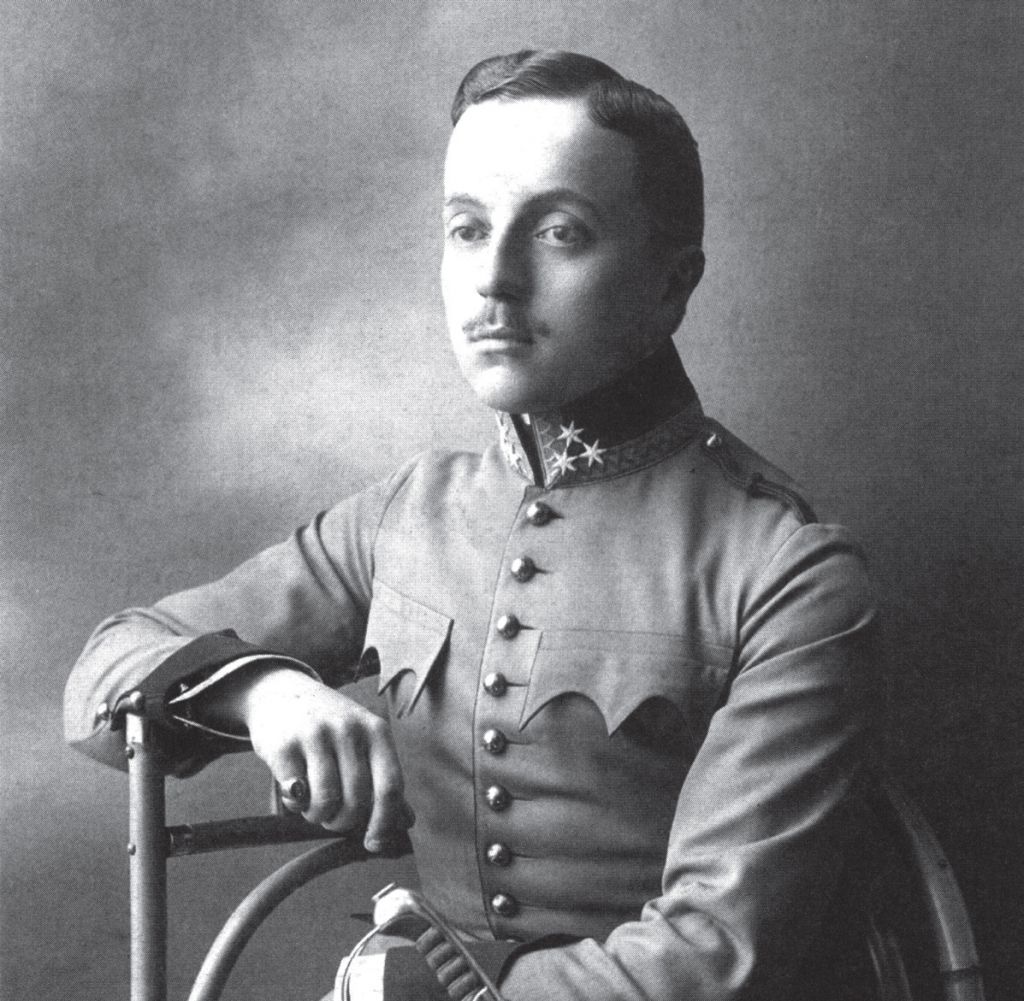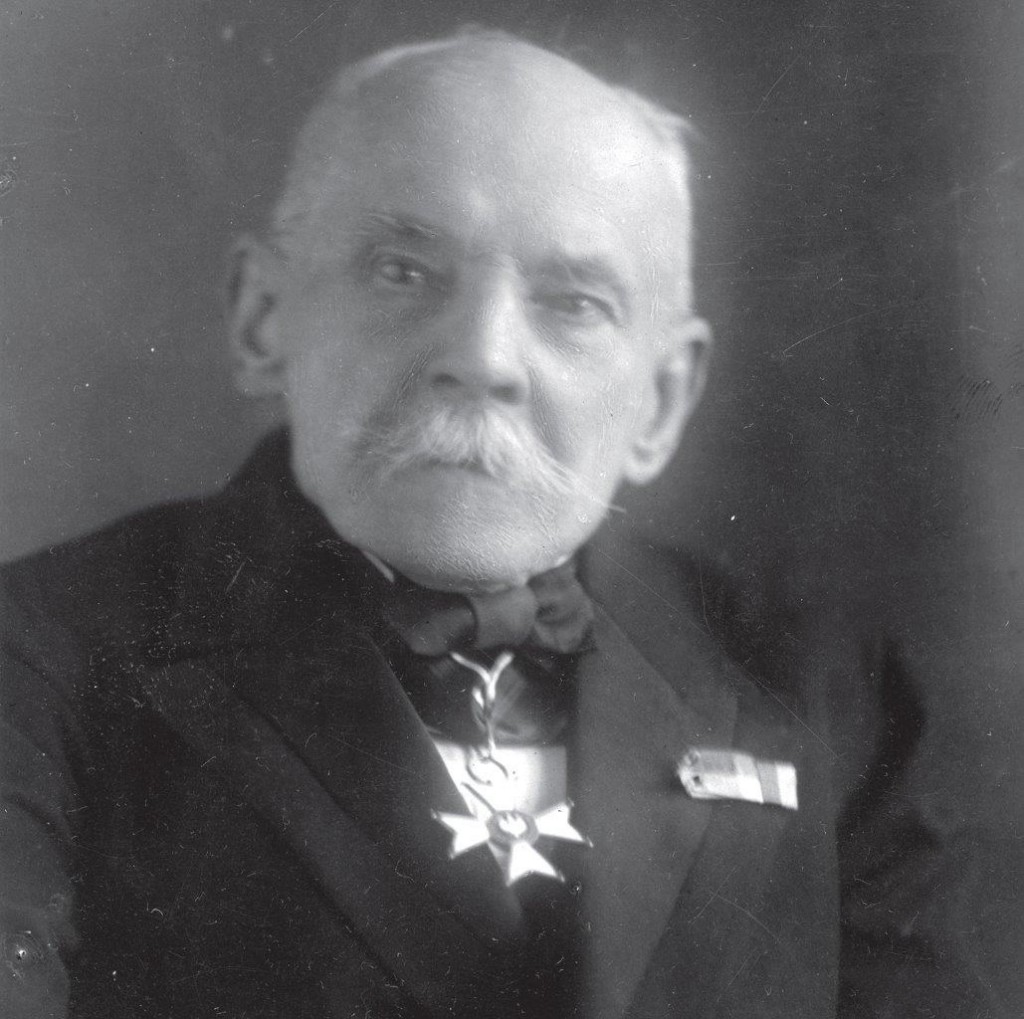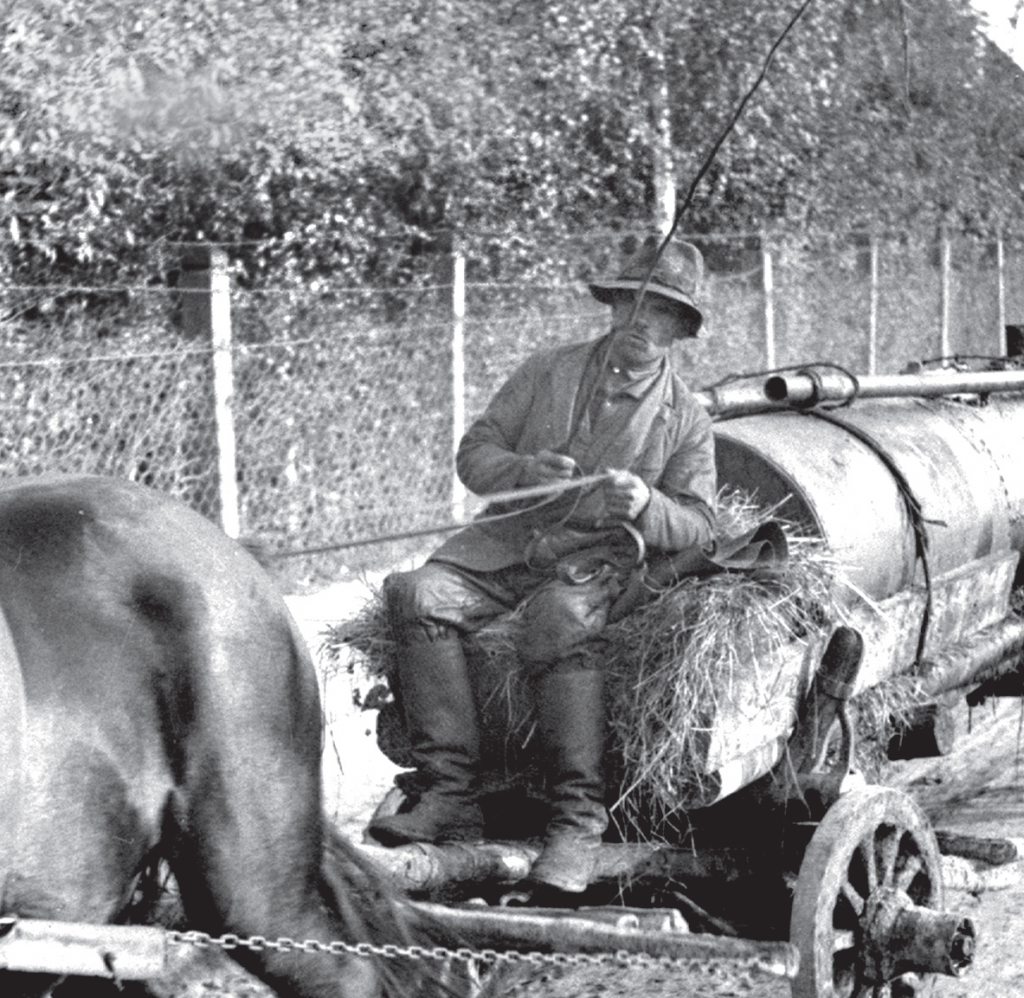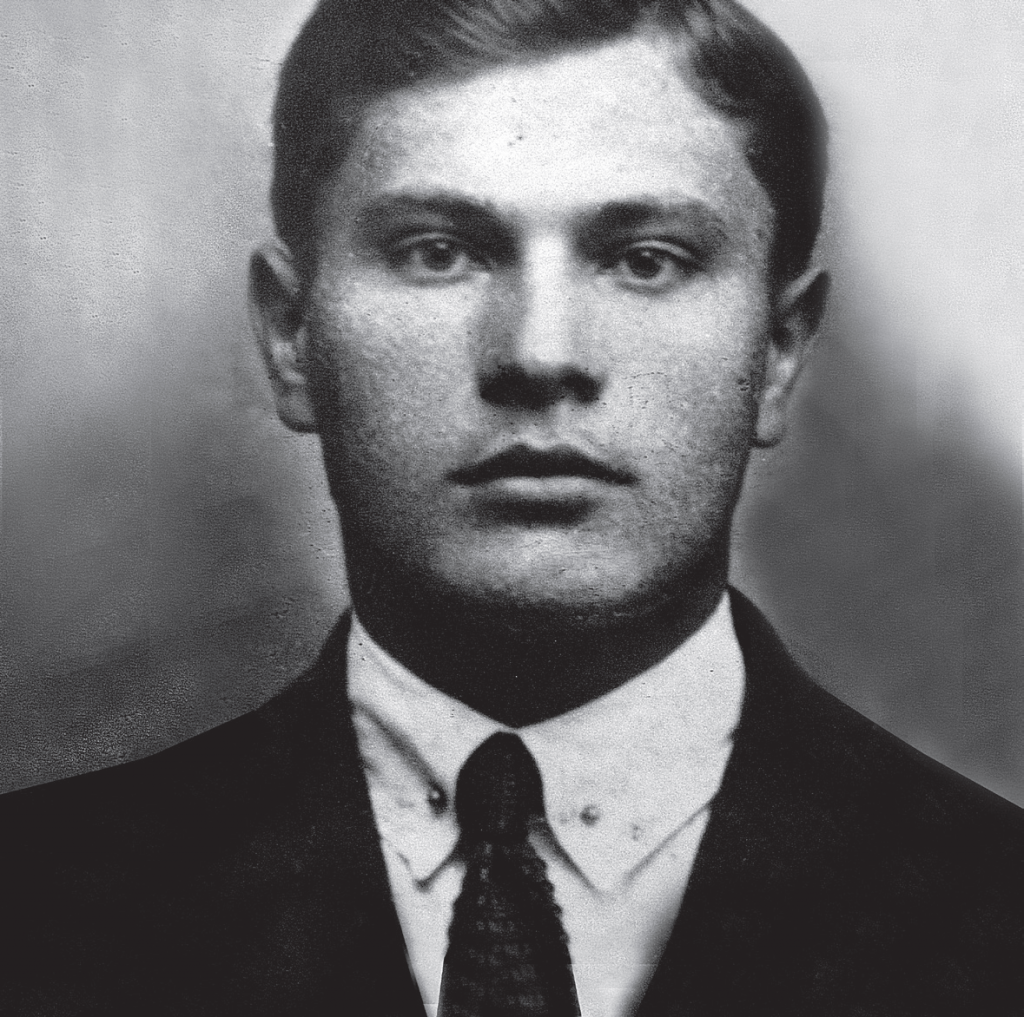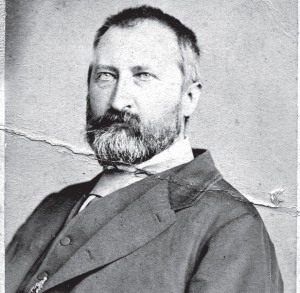Stanisław Jabłonowski was born in Annopol in Volhynia and died in Lviv. His name was established in the history books of the global oil industry due to the event in January of 1852, when he founded first oil mine in the Empty Forest in Siary, near Gorlice. In 1853, his company was noticed by Antoni Schwarz, a councillor of the Kraków Chamber of Commerce, who was touring six districts of West Galicia. This is what he wrote about Jabłonowski’s property: “As production evolves, there is potential industrial value in the natural resource and oil recently discovered at the Kobylanka property of Prince Jabłonowski for production of a mixture known as asphalt. Jabłonowski obtains a previously purified black liquid from the oil. The liquid burns with a clean and beautiful flame and burns out completely. With progress in production, this liquid could completely replace the purified oil currently used in lamps.”
Count Adam Skrzyński was born in Libusza, where oil was extracted from 1856 and where the pioneers of petroleum distillation began their bold work. He died in Marienbad. He opened an oil refinery in his home town. He produced pharmaceutical petrol and sold it to England, Belgium, Germany, Sweden, and France.He displayed his products at the industrial fairs organised in Galicia, including the 1882 fair in Przemyśl. In 1874, he built a railway line to connect the refinery with the main line running through the nearby village of Zagórzany. He imported experienced miners from Canada (including William Henry McGarvey), who popularised the Canadian (stem) drilling method. Not only did Skrzyński take care of his business but he was also an active member of the National Oil Association, which handled the mutual business of all oilmen.
Countess Jadwiga Straszewska spent her entire life in Lipinki in the district of Gorlice. She inherited land from her parents. The accidental discovery of oil in the water inside a well dug upon her order changed her life. The venture was financed by the members of the newly established oil companies: Straszewska–Fibich and Stawiarski–Straszewska. During World War I, the refinery was destroyed and the deposit was considerably depleted during World War II because of predatory exploitation. It was pretty much all gone by the 1970s. However, before all these events, more than 650 wells had been drilled in Lipinki, which produced a total of more than 500 thousand tonnes of oil. A single heiress, who decided to take advantage of the opportunity presented by the oil boom starting in Poland, was the mother of this success.
As the son of a wealthy landowner, when he came of age, he received the villages of Polanka and Świerzowa. In 1853, the herd of sheep – a source of considerable income for the Polanka farm – was being decimated by an epidemic. The witch doctor brought in from Bóbrka recommended that the sheep be covered with the black goo, which was plentiful in the local waters. The treatment was unexpectedly successful and Trzecieski turned his attention towards oil. He collected it not only from the waters, but also from excavations. The oil extraction profits made Tytus Trzecieski even wealthier and let him expand as a philanthropist.
Stanisław Szczepanowski was born in Kościan, Wielkopolska, and died in Nauheim. He studied at the Vienna Institute of Technology, the École Centrale des Arts et Manufactures in Paris and studied chemical technology and economics in London. In 1877, he received British Citizenship and was invited on a business trip to India with the Prince of Wales, the heir to the throne and future British King Edward VII. Szczepanowski refused. He chose Galicia instead, where he arrived in 1879 to explore oil and with a social and economic mission. In 1879 he went to Galicia.He founded an oil mine in Słoboda Rungurska, which produced 60 percent of Galician oil. While he grew his business, Szczepanowski also developed social and political activity in Galicia. He built houses for workers, opened cooperative stores and community houses, organised vocational training, and promoted the concept of cooperativeness as the publisher of the Self-Help weekly and president of the Union of Gainful and Economic Associations.
Albert Fauck was born in Słupsk and died in Marcinkowice. While in emigration in the United States, he fought in the Civil War, studied, and worked as an intern at coal and ore mines. His intuition of future success brought him back to Europe. In 1863, Fauck opened an oil company and launched intensive exploration. He quickly rose to fame as a prominent expert in drilling and tried to improve the methods and machinery used to extract black gold. He was the one who started the Pennsylvania drilling school and improved the Fabian cutter. In 1872, he replaced manual hammer drilling with steam machines, which considerably accelerated the development of the Galician oil industry. His devices were able to reach deeper and deeper – he reached a depth of 636m in Krościenko and 1,000m in Boryslav. He contributed his experiences to the early science of oil extraction.
William McGarvey was born in Huntingdon, Quebec, Canada and died in Vienna. The 1866 Canadian breakthrough discovery of oil deposits was also important to McGarvey. The young man first worked as a drilling intern and then opened his own extraction company. In 1881, he travelled to Europe. He opened the most innovative refinery of the time and the famous drilling machinery factory in Glinik Mariampolski. With time, he transformed his company into the Galician-Carpathian Oil Association. McGarvey held shares in numerous Galician companies, which opened successive wells. After 1905, he moved to Vienna and controlled his continuously growing oil empire from there.
Władysław Długosz was born in Kraków to a family of intellectuals. He gained experience in the oil industry in Empty Forest, Sękowa, and Ropica Ruska. After completing his internship at the mine owned by Baron Brunicki in Klęczany, he obtained his mine manager’s diploma. He worked as a manager at Bergheim & McGarvey. He singlehandedly improved the Canadian crane structure, introduced thick-walled jacket pipes, iron drill stems, and eccentric augers and finally discovered a second layer of oil deposits, the so-called deep Boryslav, in 1896. He soon became the owner of 30 drilling rigs, which turned him into an oil magnate and shortly an influential politician.
Jan Rączkowski was born in Siary near Gorlice to a peasant family. He never graduated from any schools. His career can be described as from rags to riches. He was quickly promoted to qualified worker and subsequently to master. In 1888, he took a job at the mine owned by Władysław Długosz. The mine went bankrupt and both men were hired by McGarvey, the founder of the machinery factory and refinery in Gorlice, who sent them to look for oil in Boryslav.
Over the first four years, the drillings were unsuccessful and McGarvey made a decision to cease exploration. However, Rączkowski did not give up and kept drilling. When the auger broke through 12m of rock at a depth of almost 1,000m, he struck top quality oil. This is how Jaś Rączkowski discovered the Borislav deposits. From then on, he had behind-the-scenes influence in the Galician-Carpathian Oil Association. No one knew how to drill below 1,000m as well as him and no one made better decisions when it came to malfunctions. He was a well-known and popular figure in Boryslav and was always eager to help others with advice or money.
From an early age, Zenon Suszycki was interested in technology, which led him to the Faculty of Mathematics and Physics of Moscow University. He fought in the January Uprising and had to leave abroad after it was suppressed. As an emigrant in Paris, he studied at the École des mines – a mining academy – where he obtained the title of mining engineer in 1870. He returned to settle in Galicia and got involved in the development of a new industrial field, the oil industry. He got a job as manager of the oil mine in Ropianka near Dukla, where he opened Poland’s first vocational drilling school. The candidates had to meet considerable requirements – besides writing, reading, and sketching, they had to document a minimum of two years of experience working in a mine. Over the three-month-long course, the students learned the most important aspects of the machines, as well as their structure and operation. The school also promoted the new hammer drilling method.
Adolf Jabłoński was born in Krasocin and died in Bóbrka as director of oil mine. He fought in the January Uprising. In 1870, his passion for pharmaceutics led him to contact representatives of the company administering the oil mine in Bóbrka: Łukasiewicz, Trzecieski, and Klobassa. He was sent to the United States to raise his qualifications. When he came back to Poland in 1874 the experience he obtained allowed him to build original machines, e.g. Jabłoński’s bell used to seal off water. Jabłoński’s technological persistence led to the publication of the first Polish oil industry manual entitled Oil Mining, in which he described the procedures and devices used in the drilling process.
He graduated from Higher Realschule in Kielce and from the Polish Military School in Genoa and Cuneo. He also studied economics at universities in Heidelberg, Leipzig, and Vienna. He was a member of the Polish National Government during the January Uprising. In 1868, he settled in Gorlice and took the job of head of the peasant bank. He founded Galicia’s first credit union and was elected president of the Union of Gainful and Economic Associations in Lviv. Biechoński ran the company together with Eufrozyna Dobrowolska. They managed 28 wells and employed 51 people. He wrote the book about the industry entitled: A Quick View of the Galician Oil Mining Industry.
Born in Siary near Gorlice. Nicknamed Ropniok (Oiler). In his land, the oil surfaced on its own. Franciszek Haluch collected the oil in a bubbler, drove it around, and sold it as wood tar in Grybów, Poznań, Sieradz, and in Hungary. He counted his money by pots and gave his daughters big dowries. When he was carrying in his pocket the money he made from selling oil, he would throw it in the streets and enjoy seeing children pick it up. The Haluch family had so much money that they shared it by quarters used to measure crops (32 litres). Franciszek Haluch started a family tradition – his grandchildren and great-grandchildren worked as oilmen all over the world.
Jan Zeh was born in Łańcut and died in Boryslav. In 1830, he started studying pharmacy in Sambir and obtained the title of pharmacy master in 1846 in Vienna. After graduation, he got a job at the Gold Star pharmacy in Lviv. His boss, Piotr Mikolasch, ordered him to work on distilling oil in the pharmacy’s innovative laboratory. In 1848, he was joined by Ignacy Łukasiewicz. The result of their work was the pharmaceutical distillate called Oleum Petrae album. With help from the sheet-metal worker Adam Bratkowski, they managed to light the distillate inside specially made lamps. This was a huge step towards the revolution in the lighting of streets and houses. On 20th March 1853, the window of the Golden Star pharmacy was illuminated with the first oil lamp. In late 1853, Zeh obtained a license for chemical processing of petroleum, which made him the first Galician entrepreneur with such privileges.
Ignacy Łukasiewicz was born in Zaduszniki and died in Chorkówka. He is considered as the father of Polish oil industry. In 1848, he started working at Piotr Mikolasch’s pharmacy in Lviv. Łukasiewicz and Zeh used the pharmacy’s laboratory to distil oil and subsequently used the distilled oil in lamps. With assistance from the sheet-metal worker Adam Bratkowski, they developed an oil lamp.The Mikolasch–Zeh–Łukasiewicz partnership (800 Austro-Hungarian guldens contributed by each partner) found a client who purchased 500 kg of oil with oil lamps – a Lviv hospital, which performed the first night operation with light from oil lamps on 31st July 1853. He became a politician and had more influence over the development of the Galician oil industry. He was active in worker protection laws and the construction of new roads and bridges. He also set up welfare funds (illness and accident funds for workers), communal funds (interest-free loans), bathhouses, and childcare centres.
Karol Klobassa was born in Drohobych and died in Kraków. He went to study at the Vienna University of Technology. He also studied agronomy at the Agricultural Academy in Hohenheim. Klobassa’s wealth grew considerably thanks to two marriages. His vast orchards provided apples for production of an alcoholic beverage – cider. His breakthrough decision was to let Trzecieski and Łukasiewicz drill on his field in Bóbrka, initially free of charge. Soon, oil became the foundation of his family fortune. Klobassa was also the co-founder of the National Oil Association.


